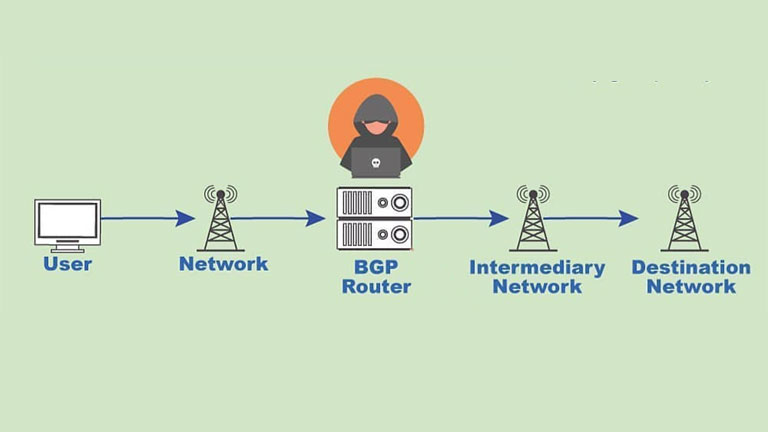
BGP is a protocol that you can use to send traffic to different locations. It also has a decision-making mechanism that can be very useful when you want to get the best route for your organization. In this article, you will find out how to use BGP and some common misconceptions that can cause problems.
Routing information
BGP routing information is the foundation of the Internet. It enables network operators to exchange routing information for efficient routes to networks on an IP internetwork. While BGP is critical to the success of the Internet, it is also vulnerable to attacks from malicious actors.
Border Gateway Protocol (BGP) is a widely adopted routing protocol for the Internet. During its implementation, BGP uses the TCP transport protocol to establish a connection between the BGP system and the other BGP peer. The BGP process then continually updates the routing table. Afterward, BGP compares the multiple routes to the destination to find the best path.
BGP has several advantages. One of them is that it can be configured to perform load balancing. Another advantage is that it can detect routing loops. This guide provides a basic overview of how BGP works.
Decision-making mechanism
The Border Gateway Protocol is one of the most important protocols used in the internet backbone. It allows autonomous systems to exchange routing information. Using BGP, a network administrator can determine the best route for a traffic destination.
The common question is, “What is the BGP decision-making mechanism?” These factors are described in the protocol specification.
First, the process is initiated by a neighboring BGP router. In this case, the neighbor sends a BGP Update containing several possible routes to a destination. Each route received is compared with the local policy rules of the neighbor. Only the best route is installed in the Loc-RIB.
Next, the decision-making process runs on each router along the route. The path attributes of each candidate are analyzed, and the shortest route is chosen. This route is then added to the Adj-RIBs-Out table.
Multiprotocol BGP extensions
Multiprotocol BGP is an extension of the BGP protocol, which enables BGP to carry routing information for multiple address families. These address families are defined by Network Layer Protocols (NLPs) and VPNs. In addition, this new extension enables IPv6 BGP to carry Network Layer Reachability Information (NLRI) separately.
This capability allows routes to be imported or exported across Virtual Routing and Forwarding (VRF) groups. For example, a router may import routes from a customer. The most common way is through the local AS.
Another way to import a route is through the extended community. A BGP extended community consists of a four-byte AS value, a route target, and a preferred value.
The route target is advertised along with the EVPN routes. The preferred value is required for routes received from an IPv6 MBGP peer. If the community is not specified, the route is not advertised.
Route-refresh capability advertisement
Route-refresh capability is a router function that helps reduce the amount of memory required to store received routes. The function is advertised to BGP peers through a BGP Capabilities advertisement.
Route-refresh capability is an optional feature that all routers can enable. It allows a local router to request a copy of a peer’s Adj-RIB-out database. Using this capability allows the router to request an inbound routing policy change without tearing down its BGP session.
The route-refresh function is standardized in RFC2918. This specification defines the basic route refresh message and its associated options. When advertising the capability, a router specifies an AFI and SAFI combination. During the negotiation phase, a requesting router can ask for specific prefixes.
When receiving a route refresh message, a BGP speaker must ensure that the options in the news match the ones in the previous message. This guarantees a predictable outcome.
Prefer the path with the lowest MED metric
When using BGP, routers prefer the path with the lowest MED metric. This is an optional attribute that Cisco IOS Software supports. It provides information to external neighbors about the shortest route to an AS. However, the value of this attribute may be modified or ignored. The MED attribute is an alternative to the BGP Local Preference and provides a method for comparing paths.
The MED value is carried into an AS and is evaluated for each path. If the same AS is neighboring all the routes, then the path with the lowest MED is preferred.
Cisco routers generally prefer local-originated routes or EBGP-learned paths over IBGP-learned paths. To configure MED, you must consider the type of ORIGIN and the LOCAL_PREF.
Alternatively, you can use the BGP best path compare-cluster-list-length command to prefer the path with the shortest CLUSTER_LIST length.
Misconceptions about BGP
The Border Gateway Protocol (BGP) exchanges routing information between autonomous systems. It’s also used to route traffic across the Internet. BGP has several myths and misconceptions.
One of the most common ones is that BGP is overloaded. BGP has a lot to offer, including a simple solution to the problems of a complex network.
Another is that the BGP system is a cynical means to an end. Many large long-distance carriers have used BGP to deliver Layer 3 VPN services.
BGP is also sometimes classified as a distance vector protocol. It uses a combination of prefixes to determine paths. However, it needs to find out how long a path is. This is because the BGP needs to be made aware of link capacity.
In addition to showcasing the most effective routing technology, BGP is also useful for sending data packets across the Internet. For example, it tells users which islands to use to reach a destination.




